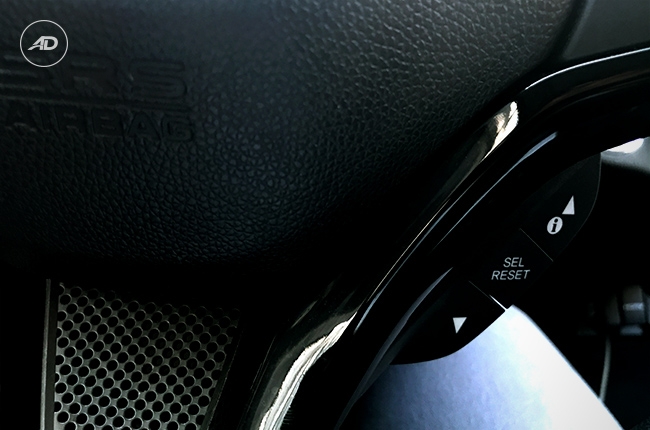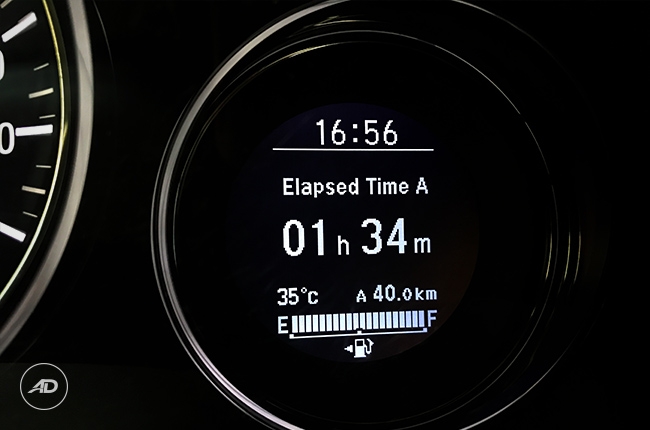
It’s needless to say that measuring your car’s fuel consumption is natural, if not necessary. After all, we spend our hard-earned cash in fuel prices that go up sporadically. And, the new fuel excise tax rates from the TRAIN law didn’t help, either.
Most modern cars are equipped with electronic fuel economy meter, usually embedded in the instrument clusters. However, older cars don’t come with this convenient feature, and some might even question the integrity of the pre-installed meter. If you are one of those people, don’t fret; there is a way to measure your actual fuel consumption — old school style.
In the Philippines, there are two units of fuel economy: km/L and L/100 km. For this article, we’ll be using km/L as it involves less math. Hooray.
You only need two things to compute for the fuel consumption: the distance from point A to point B (km), and the amount of gasoline used (L). We strongly recommend to measure the consumption of your daily route, just like what this author did.
Here, learn the steps on how to calculate your actual fuel consumption without using your fuel economy meter.

Step 1: Fill the tank.
Fill your vehicle’s fuel tank. This way, you will have a starting point to your fuel economy testing. It’s important to tell the attendant to NOT fill the tank manually, as this might affect the real amount of fuel that your car has. This is to lessen discrepancies in measurement. Just let the terminal stop itself when it thinks that the tank is full.

Step 2: Reset the trip meter.
Once done filling up your vehicle with fuel, you can go ahead and reset the trip meter. Any modern car has this in its instrument cluster, and you can usually do it by hold-pressing a button or switch.
The trip meter will measure the distance that you traveled during the trip.
Step 3: Drive from point A to point B.
Set fixed point A and point B. This author’s point A is the Caltex fuel station along EDSA, near the MMDA Main Office in Orense, Makati. This station happens to be near AutoDeal’s office, too. He did steps 1 and 2 here, while the rest were done at Caltex Balagtas in Bulacan (point B) — the gas station nearest his house.

Step 4: Take note of the distance you traveled.
Upon reaching point B, take note of the number your trip meter reads back to you. This is the total distance you traveled from point A to point B. For this author, he traveled a total of 40.0 km, which involved roughly 70% heavy EDSA traffic, 20% highway, and 10% provincial road.
Step 5: Fill your tank again and take note of the amount of fuel.
Fill your fuel tank again after taking note of the distance. Again, tell the attendant to not manually fill the tank.
Take note of the number shown at the fuel terminal. This is the amount of fuel that’s consumed by driving from point A to point B. For this author’s trip, he consumed a total of 4.279L.

Step 6: Do the math.
You now have the total distance traveled from point A to point B, and the amount of fuel used during the trip. It’s time to do the math.
For our trip, here’s the computation: 40 km / 4.279L = 9.328 km/L
Now that you have your car’s fuel consumption on your daily route, you can go ahead and budget your money for fuel. Easy peasy, lemon squeezy.
Latest Features
-
An all-electric future: The Porsche Macan Electric / Featured Article
Porsche’s Macan goes all-electric; it’s a new beast with an electrified heart, yet unmistakably Porsche in performance and spirit.
-
Which Kia should I buy? / Featured Article
We’re here to help you decide which Kia vehicle is best for you, whether it’s a sedan, crossover, or minivan.
-
Why Lynk & Co is a good option for luxury car buyers / Featured Article
Lynk & Co offers premium value for those exploring the luxury market.
Popular Articles
-
Electric Vehicles in the Philippines for under P1 million
Jerome Tresvalles · Aug 19, 2025
-
Top 3 Cars For Every Lifestyle—What Cars Are Right For You? | Behind a Desk
Caco Tirona · Apr 24, 2024
-
5 Tips to Maximize Fuel Efficiency
Jerome Tresvalles · Sep 09, 2024
-
Five driving habits that are draining your fuel tank
Jerome Tresvalles · Jun 24, 2025
-
Can engine braking harm your engine?
Jerome Tresvalles · Sep 11, 2025
-
Do electric cars even need maintenance?
Jerome Tresvalles · Oct 23, 2024
-
Best vehicles for an active outdoor lifestyle
Shaynah Miranda · Jul 25, 2024
-
How to drive different types of vehicle transmissions
May 23, 2024
-
5 easy ways to keep your car interior clean
Allysa Mae Zulueta · Nov 15, 2021
-
How to survive Metro Manila traffic
Earl Lee · Aug 16, 2022



